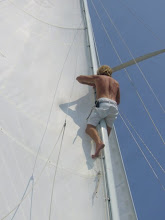Located at the Western end of the Northern Sea Route, Norway is effectively Russia's Arctic neighbor. Cognizant that it cannot challenge Russia in the Arctic, the Norwegian government seeks to maintain friendly relations with the Kremlin. Indeed, to this end the Norwegian government’s High North Strategy outlines two programs to facilitate cooperative Norwegian-Russian relations: first, an exchange program for Russian students and second, a proposal for an economic and industrial cooperation zone that covers Norwegian and Russian Arctic territories. In addition, Norway seeks to exercise its authority in a credible and predictable manner and considers sustainable Arctic development an imperative of strategic importance for Norway.
Norway currently has two ice-class vessels, both used for research. While the KV Svalbard is relatively new (2001) and is the largest vessel in the Norwegian armed forces, the government stated in 2007 that it would assess the need for a new, larger ice-class vessel. In 2008, Norway made a smaller contribution towards its presence in the Arctic by signing a contract with Rolls-Royce for a 328-foot Polar Class 10 research vessel deliverable in 2012 and capable of navigating in ice up to one foot thick. In the future, building a larger vessel would further strengthen the international knowledge base in the High Arctic while simultaneously increasing Norway's Arctic presence. Such a vessel would also add to Norway's already significant commitment to High Arctic education and knowledge-building: in 1993, the most northerly higher education institution, the University Centre in Svalbard, was established in Norway.
The Barents Sea is the region of the highest priority for Norway in the Arctic. In particular, despite relatively friendly relations there remains a section known as the Loop Hole of 67,000 square miles disputed between Russia and Norway in the Barents Sea (See Figure 5, Number 4). With significant estimated petroleum reserves, the Barents Sea and the Loop Hole are important strategic resources for the Norwegian economy. However, a 2006 submission to the United Nations Commission on the Limits of the Continental Shelf did not result in Norwegian sovereignty over the Loop Hole. Instead, the Commission on the Limits of the Continental Shelf recommended that only a bilateral maritime boundary agreement between Russia and Norway can solve the dispute.
In 2009, Norway became the first state to move its military headquarters to the High North, in Reitan. This move is in line with the country's increasing focus on the Arctic. There are also revived talks of a regional defense forum, which could facilitate regional resource sharing as Sweden nor Finland are NATO members. However, it is important to note that increased cooperation would be unlikely to take the form of a formal regional defense agreement, instead focusing on increased regional cooperation for security and operational purposes. In the Stoltenberg Report, which outlines the proposed forum, Thorvald Stoltenberg envisions a “Nordic maritime response force with search and rescue expertise and icebreaker capacity.” The Stoltenberg Report was generally well-received at its 2009 presentation and the Nordic ministers clearly see benefits in regional cooperation.
Finally, Norway is concerned about its indigenous peoples and environmental impacts of increased human presence in the Arctic. The government intends to conduct research on the effects of more intensive use of the High North, particularly in vulnerable areas, and to increase awareness about wilderness-like areas such as northern continental Norway and Svalbard. It also intends to outline a clear environmental operational framework for public- and private-sector interests in the Arctic. In addition, it has outlined a management and monitoring system for the Barents Sea and the sea in the Lofoten area. The Norwegian Polar Institute and the Institute of Marine Research will also continue to conduct research on the environment, meteorology and climate change in addition to performing a variety of other tasks, including monitoring regional fisheries. With regards to native Sami culture, the government plans to promote increased trade opportunities for native people, safeguard native food sources, promote native radio stations and invite northern people to play a key role in the development of the region.
Subscribe to:
Post Comments (Atom)




No comments:
Post a Comment